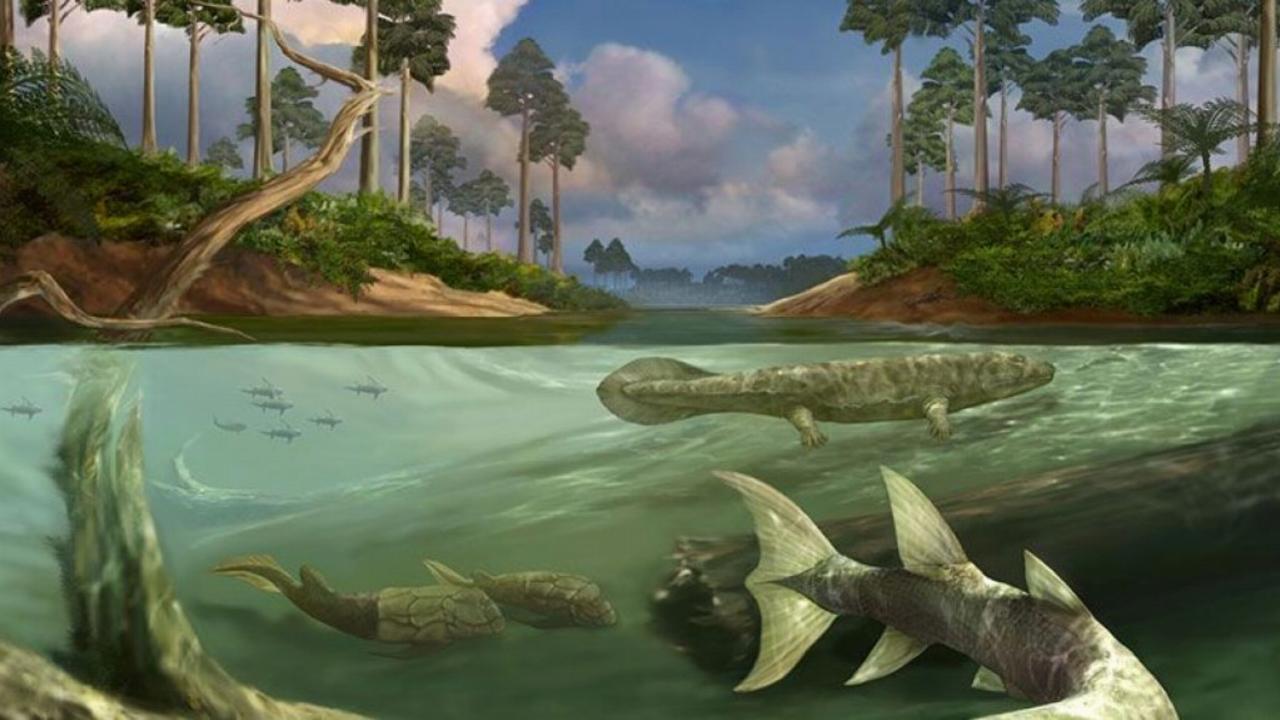
I am a palaeontologist with a passion from interdisciplinary research on major evolutionary events. My current research focuses on the evolution of the skeleton in sharks, skates, rays and elephant sharks. Fossil evidence revealed that ancient sharks started with bone, and evolved a variety of cartilaginous tissues to replace it. Our understanding of these tissues and how they relate to bone and cartilage in other vertebrates is poorly understood. I aim to tackle this by using x-ray computed tomography to visualise these tissues in 3D in modern and ancient sharks and rays.
Keywords
Palaeotologist, Evolutionary Biology, Palaeoceanography, Sharks and Rays, Cartilage, Jaws, X-ray computed tomography, 3D modelling, Ichnology, Palaeozoic
Researchinterest
Exploring physical and biological apsects of major evolutionary events among vertebrates.
My foray into research began in oceanography, specifically tides, in which we created a new criterion to quantify further the tidal phenomenon known as double-high tides. My interest in tides evolved into collaborating with UK and international researchers to explore the influence of tides on the fish-tetrapod transition. Hooked on this fascinating evolutionary event, I embarked on a PhD examining faecal and body fossil material from the Devonian-Carboniferous Boundary. This yielded some surprising findings, including the revelation of a productive ecosystem with tetrapods in the immediate aftermath of the Hangenberg mass extinction which is associated with a hiatus in tetrapod body fossils. My current research focuses on the evolution of the skeleton in chondrichthyans, and their fascinating transition from bone to cartilage. This will aid in our understanding of how their cartilage relates and differs to ours and could aid in research on cartilage disorders in humans. My research portfolio also includes collaborations on studying tetrapod environments from the Middle Devonian of Ireland and Canada and using paleobiology to constrain deep-time reconstructions and tides.


Currenttopics
- Functional variation of calcified cartilage related to different feeding modes in modern sharks and rays (chondrichthyans).
- The transition from bony to cartilaginous tissues in ancient chondrichthyans.
- Fossil poo (coprolites) and tetrapod remains from the Devonian-Carboniferous of Greenland.
- Gut contents of an important fish-tetrapod transitionary organism, Elpistostege and coprolites from the Late Devonian of Canada.
- Early tetrapod trackways and fauna from the Middle Devonian of Ireland.
- Deep time tides: Using paleobiology to constrain tidal simulations and paleogeographic reconstructions. How tides influence major evolution/extinction episodes.
Keypublications
- Dupret, V., Byrne, H., Challands, T., Hammer, Ø., Higgs, K., Long, J., ... & Ahlberg, P. E. (2023). Non-tetrapod sarcopterygians from the Valentia Slate Formation (Givetian, Devonian) of the Iveragh Peninsula, south-western Ireland: systematic reappraisal and palaeobiogeo-graphic implications. Spanish Journal of Palaeontology, 38(1), 37-46.
- Dupret, V., Byrne, H. M., Castro, N., Hammer, Ø., Higgs, K. T., Long, J. A., ... & Ahlberg, P. E. (2023). The Bothriolepis (Placodermi, Antiarcha) material from the Valentia Slate Formation of the Iveragh Peninsula (middle Givetian, Ireland): Morphology, evolutionary and systematic considerations, phylogenetic and palaeogeographic implications. Plos one, 18(2), e0280208.
- Byrne, H. M., Niedźwiedzki, G., Blom, H., Kear, B. P., & Ahlberg, P. E. (2022). Coprolite diversity reveals a cryptic ecosystem in an early Tournaisian lake in East Greenland: Implications for ecosystem recovery after the end-Devonian extinction. Palaeogeography, Palaeoclimatology, Palaeoecology, 605, 111215.
- Byrne, H. M., Green, J. A. M., Balbus, S. A., & Ahlberg, P. E. (2020). Tides: A key environmental driver of osteichthyan evolution and the fish-tetrapod transition?. Proceedings of the Royal Society A, 476(2242), 20200355.
- Byrne, H. A., Green, J. A., & Bowers, D. G. (2017). The double high tide at Port Ellen: Doodson's criterion revisited. Ocean Science, 13(4), 599-607.
PhDsupervision
I am currently co-supervising a PhD student, Rocio Baños Rodríguez, who is based as the Université du Québec à Rimouski in Canada. Her project explore the palaeoenvironment, palaeobiology and palaeoecology of Elpistostege, and important organism in the fish-tetrapod transition, and it's ecosystem.

In themedia
My research on tides as a driver on fish moving on to land, known as the fish-tetrapod transition, has featured in multiple popular research articles and even inspired a poem!
